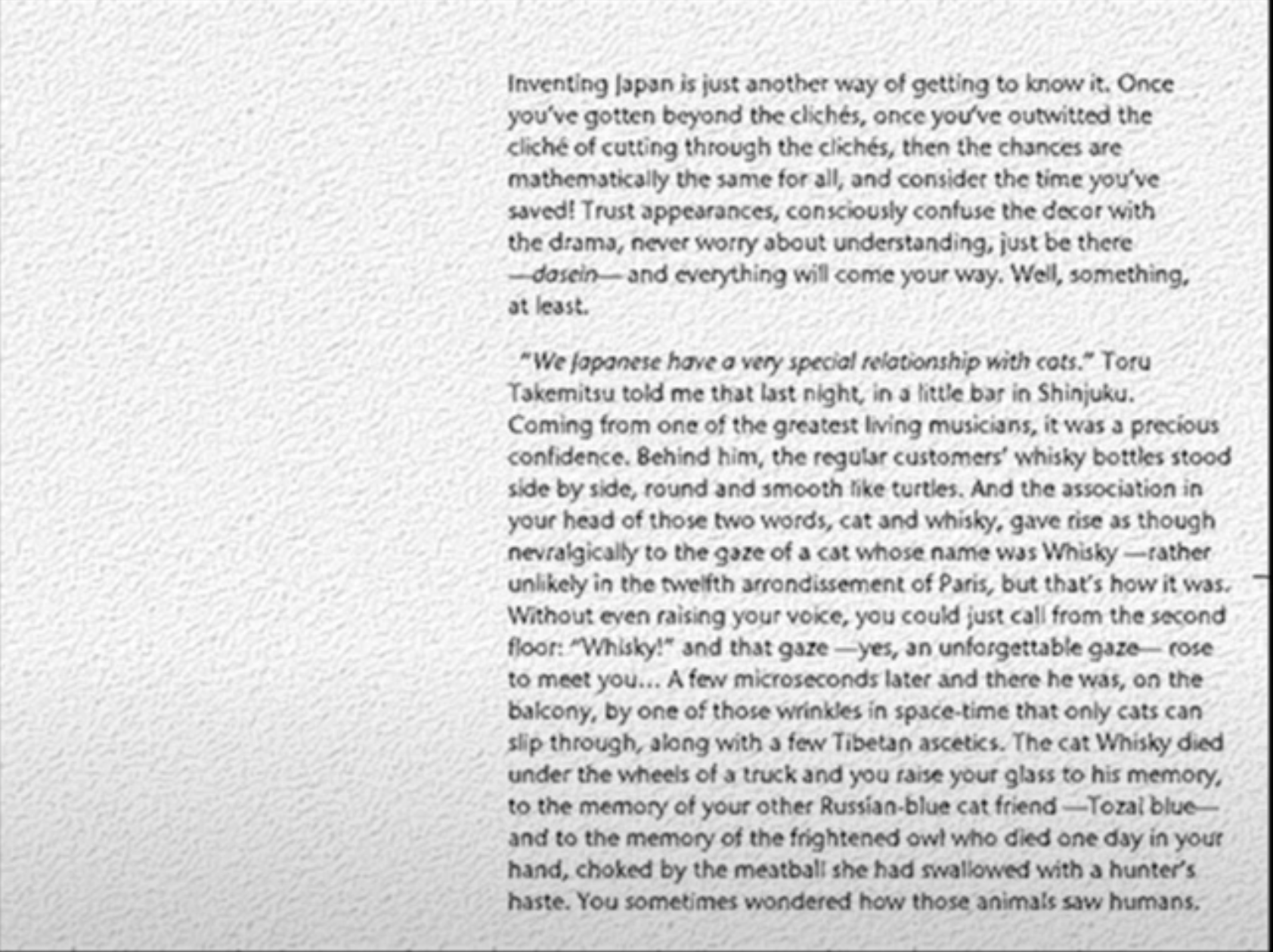“In Shinjuku we drink to the death of cats and owls”: Chris Marker’s ‘Immemory’
I had a very strange experience interacting with Chris Marker’s Immemory because I did not choose the path through Marker’s memories myself, but rather watched a (four hour) YouTube video of someone else navigate the game. I was not able to access Immemory on my laptop; even trying to navigate the directions and the files as they appeared on my desktop felt like trying to piece together fragments of knowledge, and I found myself frustrated and asking myself, “What is wrong with me that I cannot make this work?” I put the blame squarely on my own inability, rather than the possibility that the technology was failing me. But it reminded me of not only the frailty of memories but of memories stored within outside containers as we attempt to preserve them in objects and artifacts outside of our own mind, as if this will keep them more safe. Whether this is written on paper, hosted in the nebulous “cloud”, or stored on a CD-rom. Even now, Chris Marker’s memories as they were meant to be experienced were inaccessible to me as I encountered the barrier of an outdated technology.
So my experience with Immemory was mediated by another, an unknown YouTube user who determined our path through the game. Not only was I trying to follow Marker’s journey through his memories, but I was also following this unknown user attempt to make sense of the connecting pathways and experiences. However, one thing was perfectly clear: Marker had demonstrated through Immemory that one can only access certain memories by first reaching for others. Unable to live within the constraints of a linear narrative, memories exist on top of one another, related or unrelated, and we insert fragments of reality or imagination into the memories we hold.
Marker’s memories of the Gulf War intersect and overlap with the memories of his visits to museums as child; images and ideas of war become integrated with remembered artworks in Marker’s mind.
In his liner notes, Marker writes:
“ But my fondest wish is that there might be enough familiar codes here (the travel picture, the family album, the totem animal) that the reader-visitor could imperceptibly come to replace my images with his, my memories with his, and that my ‘Immemory’ should serve as a springboard for his own pilgrimage in Time Regained.”
This “familiar code” was particularly potent to me in the moment Marker recounts his visit to a bar in Shinjuku, Japan, where they raise glasses to deceased cats and owls (both animals appear to serve as unofficial “guides” through Marker’s memories, their images frequent throughout Immemory’s various zones and allowing the viewer to resurface, grasping something familiar as if we finally have an “in” to Marker’s memories, or at least a piece of the collective). Here, I could recall my own travels to Shinjuku, to navigating the small, dark alleys which led me to hidden bars. In some ways, I can not only imagine Marker’s memories, but share a deliberate, experienced memory.


At one point during this section, I watched the unknown navigator attempt to call up an image on this page which appeared possible only if he clicked on a certain area. I watched the cursor move frantically on the page, trying to recall the image, like the frustration of trying to recall a certain memory.
Success!

